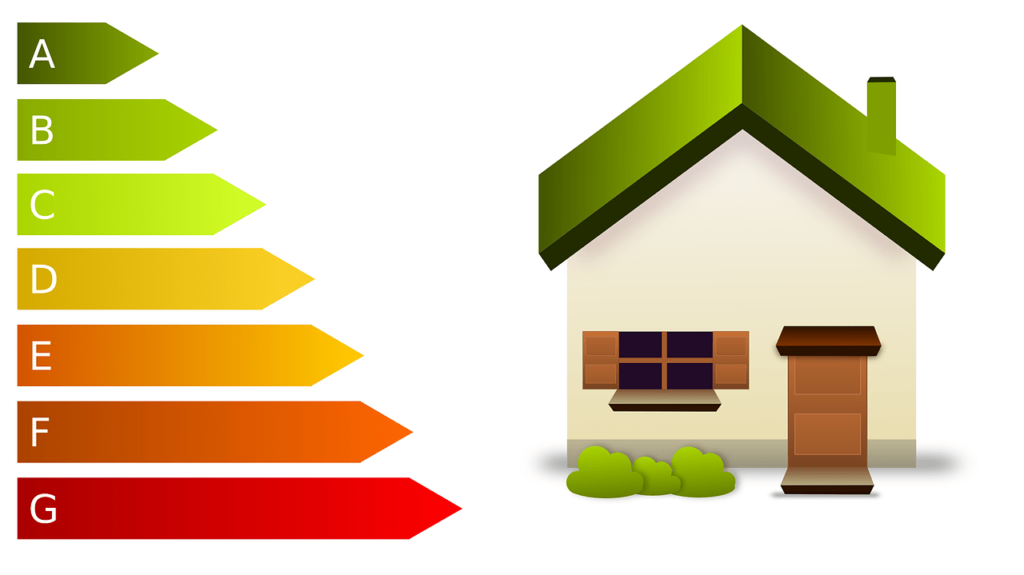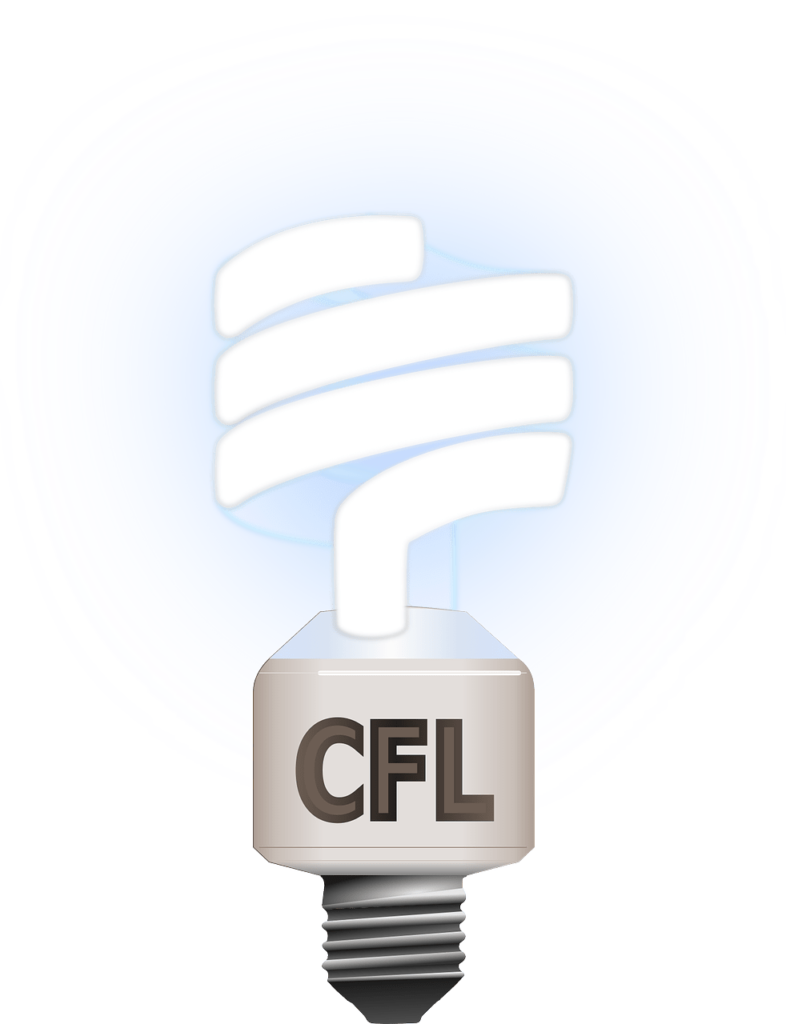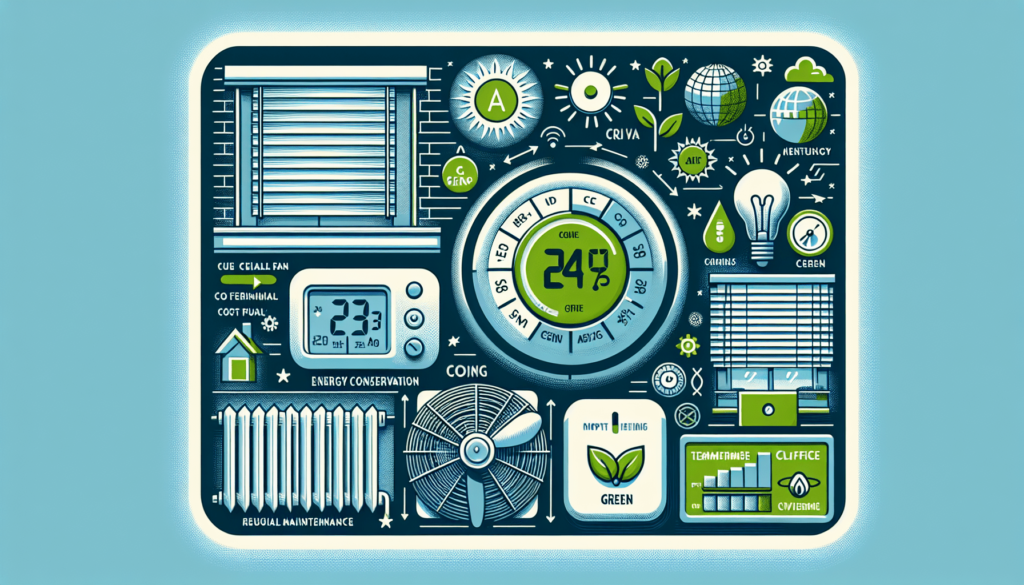In today’s fast-paced and energy-conscious world, optimizing office cooling systems has become increasingly important for businesses. With rising energy costs and the push for sustainability, finding the best ways to save energy and money on office cooling has become a top priority. This article explores key strategies and techniques that can help you reduce energy consumption and lower your office cooling expenses without compromising on comfort and productivity. From implementing smart thermostat technology to efficient air circulation and proper insulation, these practical tips will not only contribute to a more environmentally-friendly workplace but also result in significant cost savings.

This image is property of pixabay.com.
Maximizing Natural Ventilation
Understanding the concept of natural ventilation
Natural ventilation is a process of allowing fresh outdoor air to enter and circulate within a space without the use of mechanical systems. It is a cost-effective and energy-efficient way to cool an office space while also enhancing indoor air quality. By taking advantage of natural airflow, you can reduce the need for artificial cooling methods and minimize energy consumption.
Strategic positioning of windows and doors
The strategic positioning of windows and doors plays a crucial role in maximizing natural ventilation. By strategically placing windows and doors, you can take advantage of cross ventilation, where cool air enters through one opening and warm air is expelled through another. Positioning windows on opposite sides of the office space allows for a natural breeze to flow through, effectively cooling the area.
Utilizing wind and stack effect
Wind and stack effect are natural phenomena that can be used to enhance natural ventilation. Wind effect refers to the movement of air caused by external wind. By positioning windows and openings to capture the prevailing winds, you can create a natural airflow that helps to cool the office space.
Stack effect, on the other hand, occurs when warm air rises and creates a pressure difference, causing cool air to be drawn in from below. By creating openings at both high and low levels of the office space, you can take advantage of the stack effect to enhance natural ventilation.
Investing in Energy Efficient Cooling Equipment
Exploring modern energy-efficient cooling systems
Investing in energy-efficient cooling systems can significantly reduce energy consumption and lower cooling costs. Modern cooling systems, such as variable refrigerant flow (VRF) systems and evaporative coolers, are designed to provide efficient and effective cooling while minimizing energy waste.
VRF systems use advanced technology to provide zoned cooling, allowing you to cool specific areas of the office space based on occupancy and demand. These systems are highly efficient and can adjust cooling capacity in real-time, resulting in significant energy savings.
Evaporative coolers, also known as swamp coolers, utilize the natural process of evaporation to cool the air. These systems are particularly effective in dry climates and can provide substantial energy savings compared to traditional air conditioning systems.
Budget considerations
When investing in energy-efficient cooling equipment, it is essential to consider the initial cost and the long-term savings. While energy-efficient systems may have a higher upfront cost, the energy savings over time can offset this initial investment. Conduct a cost-benefit analysis to determine the return on investment and make an informed decision.
System maintenance and service requirements
Proper maintenance and regular servicing of energy-efficient cooling systems are essential to ensure optimal performance and longevity. Regular inspection, cleaning, and filter replacement can help maintain system efficiency and prevent breakdowns. It is advisable to hire professional HVAC services to perform routine maintenance and address any issues that may arise.
Proper Thermostat Management
Effective temperature setting
Proper thermostat management is crucial for optimizing energy usage and achieving a comfortable office temperature. Set the thermostat to a moderate temperature that balances comfort and energy efficiency. For cooling, the recommended temperature is around 24-26 degrees Celsius (75-78 degrees Fahrenheit). Avoid setting the thermostat too low, as this can result in unnecessary energy consumption.
Power save modes
Most modern thermostats come with power save modes or energy-saving features. These modes allow the thermostat to adjust the temperature based on occupancy or time of day, ensuring efficient cooling when needed and conservation when the office is unoccupied. Utilize these features to minimize energy wastage and maximize savings.
Smart thermostat options
Smart thermostats offer advanced features and capabilities that enable even greater energy savings. These thermostats can learn and adapt to occupant preferences, automatically adjusting the temperature based on patterns and preferences. Additionally, they can be controlled remotely through smartphone apps, allowing you to manage cooling settings even when away from the office. Consider investing in smart thermostat options to achieve optimal energy efficiency and convenience.
Insulating the Office Space
Understanding the importance of proper insulation
Proper insulation plays a crucial role in maintaining a comfortable temperature within the office and minimizing heat transfer. Insulation acts as a barrier, reducing the exchange of heat between the indoor and outdoor environments. By effectively insulating the office space, you can prevent heat gain during hot periods and heat loss during cold periods, resulting in a more energy-efficient cooling system.
Exploring insulation materials
There are various insulation materials available, each with its own benefits and applications. Common insulation materials include fiberglass, mineral wool, cellulose, and spray foam. Fiberglass insulation is a popular choice due to its affordability and excellent thermal performance. Mineral wool provides superior fire resistance and soundproofing properties. Cellulose insulation, made from recycled paper or plant fibers, is eco-friendly and effective at reducing heat transfer. Spray foam insulation creates an airtight seal, preventing air leakage and heat exchange.
Investing in insulated windows
Windows are one of the main sources of heat gain in an office space. Investing in insulated windows, such as double-glazed or low-emissivity (low-e) windows, can significantly reduce heat transfer and improve energy efficiency. These windows have multiple layers of glass with insulating gas in between, providing better thermal insulation. Additionally, low-e windows have a special coating that reflects heat back into the room, further reducing heat gain.

This image is property of pixabay.com.
Reducing Heat Generation Within the Office
Energy-efficient electrical equipment
Replacing old and inefficient electrical equipment with energy-efficient alternatives can help reduce heat generation within the office. Look for ENERGY STAR certified appliances and electronic devices, as they are designed to consume less energy and produce less heat. Additionally, encourage employees to turn off equipment when not in use to minimize unnecessary heat output.
Positioning equipment away from temperature sensors
Temperature sensors in the office space may be affected by heat generated by equipment in close proximity. This can cause the cooling system to work harder than necessary, resulting in energy wastage. Ensure that equipment, particularly heat-producing appliances, is positioned away from temperature sensors to avoid false readings and inefficient cooling.
Reducing usage of heat-producing appliances
Heat-producing appliances, such as printers, copiers, and coffee machines, can contribute to increased indoor temperature. Encourage employees to minimize the use of these appliances or relocate them to well-ventilated areas to reduce the impact on cooling. This small adjustment can help improve comfort and reduce the load on the cooling system.
Office Design and Layout Considerations
Open floorplan benefits
An open floorplan design can facilitate better air circulation and natural ventilation. By eliminating walls and barriers, airflow can move freely throughout the office, enhancing the effectiveness of natural ventilation. Consider adopting an open floorplan layout or reconfiguring existing office space to promote airflow and improve cooling efficiency.
Use of blinds and shades
The use of blinds and shades can help regulate the amount of sunlight entering the office and reduce heat gain. Install blinds or shades on windows, particularly those exposed to direct sunlight, and adjust them accordingly to block or diffuse sunlight when needed. This simple measure can significantly reduce the need for artificial cooling methods and lower energy consumption.
Color scheme impact on heat absorption
The color scheme used in the office space can influence heat absorption. Dark-colored surfaces tend to absorb more heat, leading to higher temperatures. On the other hand, lighter-colored surfaces reflect more heat, helping to maintain a cooler environment. Consider utilizing lighter shades for walls, ceilings, and furniture to minimize heat absorption and enhance cooling efficiency.

This image is property of pixabay.com.
Regular Maintenance of the Cooling Systems
Importance of regular servicing
Regular servicing of cooling systems is essential to ensure optimal performance, efficiency, and longevity. Neglecting maintenance can result in reduced cooling capacity, increased energy consumption, and potential system breakdowns. Schedule routine maintenance checks to clean filters, inspect components, and address any issues promptly.
Identifying potential problems
Regular maintenance allows for timely identification of potential problems or inefficiencies in the cooling system. By conducting regular inspections and diagnostic tests, you can identify and address issues that may be impacting the system’s performance. Prompt resolution of these problems can prevent further damage and extend the lifespan of the cooling system.
Hiring professional HVAC services
To ensure proper maintenance of the cooling systems, it is advisable to hire professional HVAC services. Trained technicians have the expertise and knowledge to conduct comprehensive inspections, perform necessary repairs, and provide recommendations for optimal system performance. By engaging professional services, you can have peace of mind knowing that your cooling system is being well-maintained.
Use of Fans to Complement Air Conditioners
Ceiling fans for air circulation
Ceiling fans can be used as a complementary cooling method to air conditioners. They promote air circulation and enhance the effectiveness of natural ventilation by moving the air within the office space. By using ceiling fans in conjunction with air conditioners, you can distribute cool air more efficiently and potentially reduce the reliance on air conditioning.
Stand-alone fans for focused cooling
Stand-alone fans, such as pedestal or desk fans, can provide focused cooling for individual workstations or specific areas within the office. They are energy-efficient alternatives to air conditioners and can be easily adjusted based on personal preferences. Encourage employees to utilize stand-alone fans in their immediate work area to provide additional cooling and reduce the need for excessive air conditioning.
Energy savings compared to air conditioning
Utilizing fans in conjunction with air conditioning can result in energy savings. By using fans to improve air circulation and augment the cooling provided by air conditioners, you can raise the thermostat setting by a few degrees without sacrificing comfort. This can translate into significant energy savings and reduced cooling costs.

Proper Training of Office Staff
Establishing guidelines for energy use
Establishing clear guidelines for energy use can help create an energy-conscious office culture. Communicate expectations regarding energy-saving practices, such as turning off lights and equipment when not in use, utilizing natural ventilation whenever possible, and minimizing the use of heat-producing appliances. By involving employees in the energy-saving efforts, you can foster a sense of responsibility and collective commitment towards reducing office cooling costs.
Importance of staff involvement in energy saving
Staff involvement is crucial in achieving energy savings in the office. Encourage employees to actively participate in energy-saving practices, such as keeping windows and doors closed when the air conditioner is running, adjusting blinds and shades to optimize natural lighting, and reporting any equipment issues or energy inefficiencies. Regularly communicate the importance of their contribution and recognize individual efforts to create a positive energy-saving culture.
Offering trainings and workshops
Providing training sessions and workshops on energy-saving practices can increase awareness and knowledge among office staff. Educate employees on the benefits of energy conservation, proper thermostat management, and the use of energy-efficient equipment. These training sessions can empower employees to take ownership of their individual energy usage and make informed decisions to reduce cooling costs.
Investing in Alternative Cooling Techniques
Benefits and limitations of evaporative coolers
Evaporative coolers, also known as swamp coolers, offer an alternative cooling technique that relies on the evaporation of water to cool the air. These systems are highly effective in hot and dry climates, where humidity levels are low. Evaporative coolers provide energy savings compared to traditional air conditioners, as they consume less electricity. However, they are not suitable for humid environments, as they add moisture to the air.
Geothermal cooling systems
Geothermal cooling systems utilize the stable temperature of the ground to cool indoor spaces. They extract heat from the air and transfer it to the ground through a series of pipes buried underground. Geothermal systems are highly energy-efficient, as they rely on the earth’s natural heat sink. However, they require significant upfront investments and may not be feasible in all locations due to geological considerations.
Solar-powered cooling systems
Solar-powered cooling systems harness the sun’s energy to provide cooling. These systems utilize solar panels to generate electricity, which powers the cooling system. Solar-powered cooling systems are environmentally friendly and can significantly reduce energy consumption and associated costs. However, their efficiency may be affected by weather conditions, and the initial installation cost may be higher compared to traditional cooling systems.
In conclusion, there are various ways to save energy and money on office cooling. Maximizing natural ventilation, investing in energy-efficient cooling equipment, proper thermostat management, insulation, reducing heat generation, office design considerations, regular maintenance, using fans, staff training, and exploring alternative cooling techniques all contribute to achieving a comfortable and energy-efficient office space. By implementing these strategies, businesses can reduce their cooling costs, minimize their environmental impact, and promote a sustainable workplace.


